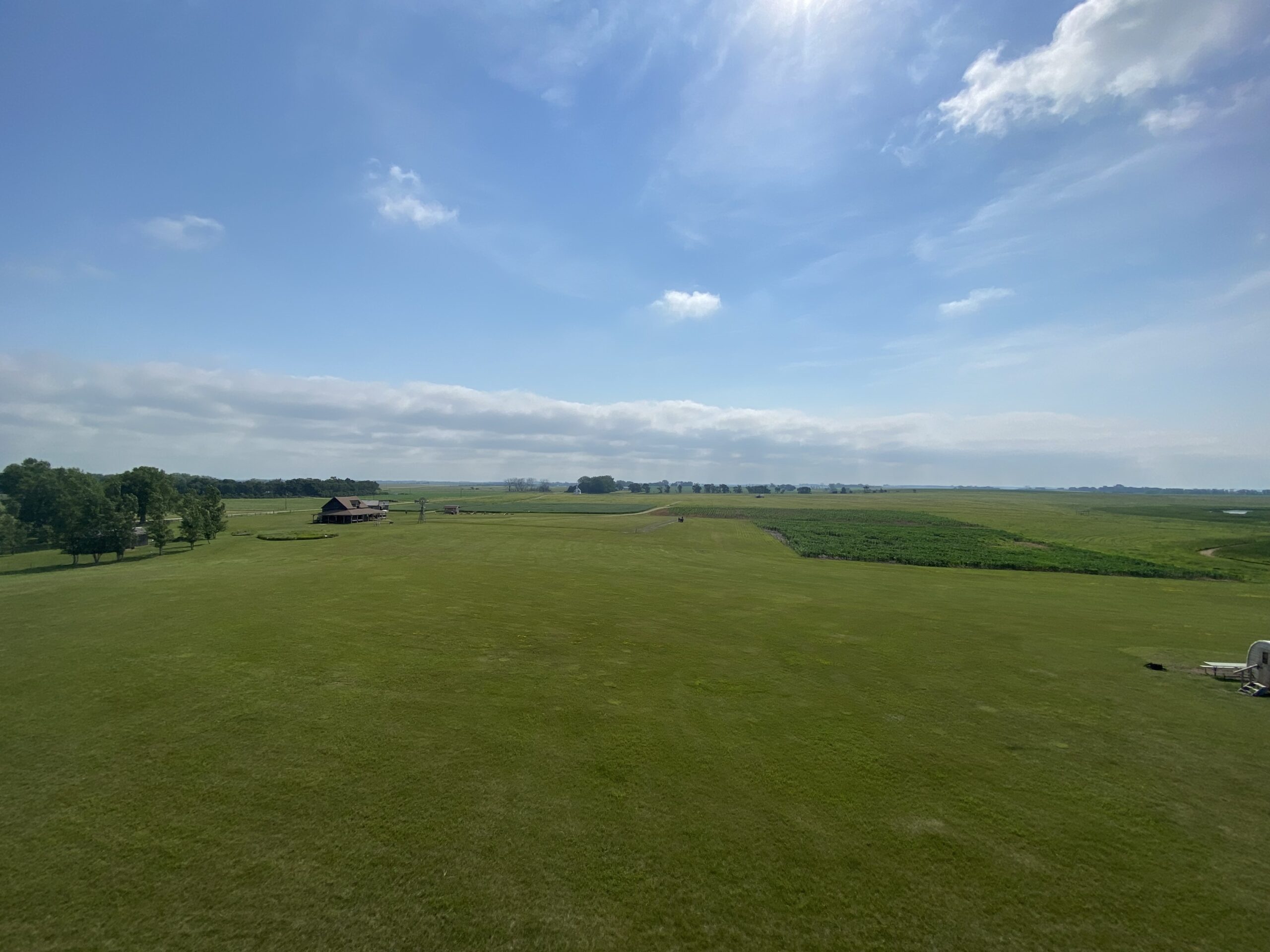Little House on the Prairie was one of Mrs. 123’s favorite shows when she was growing up. She also enjoyed reading all the books in the series. So we included several stops along the Laura Ingalls Wilder History Highway to our itinerary for this year. The first of those stops, De Smet, South Dakota, was where the Ingalls family purchased a prairie homestead and built a new life.
The Ingalls family moved frequently during Laura’s childhood, as one location after another turned out to be disastrous for the family. Her father filed for a formal homestead outside of De Smet in 1879. The family purchased the land and moved into a dugout sod house built by the previous owner. The house still remains on the homestead, although other buildings there are recreations based on the books.

The homestead site has a few RV parking spots, so we were able to settle in and take a tour of the site early the next morning. The site shows how the Ingalls family and other pioneers lived a harsh life on the prairie. One of the buildings displays a Prairie Schooner, the covered wagons in which families moved all their belongings westward. It’s almost shocking how small those wagons were, only 4 feet wide and 10 feet long. The sod house was also surprisingly small for a family of five.
The homestead is a particularly fun place for kids, with plenty of hands-on activities, from making rope to riding buggies drawn by ponies.

Later that day, we drove into De Smet to tour some of the sites mentioned in the Little House books. The town’s general store is still operating, mainly as a gift shop. A downtown museum also offers tours of the surveyor’s house, where the family spent the winter of 1879-1880 in relative luxury, and a schoolhouse where the Ingalls girls attended class. A few blocks away is the house where Charles and Caroline Ingalls, Laura’s parents, lived out their final years, taking care of her blind sister, Mary. The house still holds many of the Ingalls’ possessions, including the big green book of animal pictures that Laura mentions repeatedly in her stories.

All of the De Smet sites are a good reminder how television can make things look idyllic, even though they were tremendously hard and often tragic. It’s really hard to underestimate how much work daily life involved back then.

We were also supposed to stop in Walnut Grove, Minn., to visit the Ingalls’ homestead along the banks of Plum Creek. The family settled on the property in May 1874, declaring their intent to homestead it. But after three consecutive crop failures they decided to move on. Unfortunately, we had to skip that stop due to a family emergency.

Nearly a month later (yes, there’s a bit of lag in these blog posts) we stopped in Pepin, Wisconsin, and visited the Laura Ingalls birthplace. Locals have reconstructed a cabin on the site. We happened to visit on a weekend, where Little House enthusiasts were recreating many of the activities that sustained the pioneers of the time, including demonstrations of quilting, weaving, log home construction and musket firing.

We took the opportunity to eat a picnic lunch at the tables near the reconstructed cabin and to reflect on the stories that not only entertained multiple generations of readers and viewers, but helped us understand the challenge that settlers faced as they moved westward. Living in our little RV trailer seems like a luxurious life in comparison.
Days: 170
Miles Traveled: 22,935
Next stop: Isle Royale National Park


